Potrebujeme váš súhlas na využitie jednotlivých dát, aby sa vám okrem iného mohli ukazovať informácie týkajúce sa vašich záujmov. Súhlas udelíte kliknutím na tlačidlo „OK“.
ASTM F2107-08
Standard Guide for Construction and Maintenance of Skinned Areas on Baseball and Softball Fields
Automaticky preložený názov:
Štandardné Sprievodca pre výstavbu a údržbu bez kože oblastí na baseball a softball polia
NORMA vydaná dňa 1.11.2008
Informácie o norme:
Označenie normy: ASTM F2107-08
Poznámka: NEPLATNÁ
Dátum vydania normy: 1.11.2008
Kód tovaru: NS-52856
Počet strán: 8
Približná hmotnosť: 24 g (0.05 libier)
Krajina: Americká technická norma
Kategória: Technické normy ASTM
Kategórie - podobné normy:
Anotácia textu normy ASTM F2107-08 :
Keywords:
athletic field, baseball, clay, skinned area, softball, soil, sports field, Baseball equipment/applications, Construction--sports environments, Maintenance--sports environments, Skinned playing areas, Softball equipment, Sports facilities playing surfaces, ICS Number Code 97.220.10 (Sports facilities)
Doplňujúce informácie
| Significance and Use | ||||||||||||||||||
|
The skinned areas of baseball and softball fields should provide a uniform playing surface of high quality. Ball bounce should be true and predictable. Footing and sliding properties should favor optimum performance of players. Undulations, rough surface, hard or soft surfaces, weeds, stones, and wet spots detract from good play. Playing surface quality is largely affected by construction and maintenance procedures, and this standard guide addresses those procedures. While warning tracks are a type of skinned area found on baseball and softball fields, this standard does not apply to warning tracks. A separate standard, Guide F 2270, presents information pertaining to warning tracks. During construction, consideration should be given to factors such as the physical and chemical properties of materials used in the area, freedom from stones and other debris, and surface and internal drainage. Maintenance practices that influence the playability of the surface include edging, dragging, rolling, watering, vegetation control, brushing or hosing to prevent buildup of a lip of mineral matter in turfgrass at the skinned/turfed edges, and removal of stones and debris that may adversely affect play and safety. Those responsible for the design, construction, or maintenance, or a combination thereof, of skinned areas on baseball and softball fields will benefit from this guide. This guide provides flexibility in choices of procedures and can be used to cover a variety of use and budget levels. |
||||||||||||||||||
| 1. Scope | ||||||||||||||||||
|
1.1 This guide covers techniques that are appropriate for the construction and maintenance of skinned areas on baseball and softball fields. This guide provides guidance for the selection of materials, such as soil, sand, gravel, crushed stone, crushed brick, calcined clay, calcined diatomaceous earth, vitrified clay, etc., for use in constructing or reconditioning skinned areas and for the selection of management practices that will maintain a safe and playable skinned surface. Although this guide is specific to baseball/softball, it has application to other sports where ball bounce, ball roll, or player footing, or a combination thereof, are of importance. 1.2 Decisions in selecting construction and maintenance techniques are influenced by existing soil types, climatic factors, level of play, intensity of use, equipment available, budget, and training and ability of management personnel. 1.3 The values stated in SI units are to be regarded as the standard. The values in parentheses are for information only. 1.4 This standard may involve hazardous materials, operations, and equipment. This standard does not purport to address all of the safety concerns, if any, associated with its use. It is the responsibility of the user of this standard to establish appropriate safety and health practices and determine the applicability of regulatory requirements prior to use. 1.5 This guide offers an organized collection of information or a series of options and does not recommend a specific course of action. This document cannot replace education or experience and should be used in conjunction with professional judgment. Not all aspects of this guide may be applicable in all circumstances. The ASTM standard is not intended to represent or replace the standard of care by which the adequacy of a given professional service must be judged, nor should this document be applied without consideration of a project’s many unique aspects. The word “Standard” in the title of this document means only that the document has been approved through the ASTM consensus process. |
||||||||||||||||||
| 2. Referenced Documents | ||||||||||||||||||
|
Podobné normy:
Historická
1.7.2009
Historická
1.11.2011
Historická
1.3.2011
Historická
1.7.2013
Historická
1.9.2012
Historická
1.4.2014


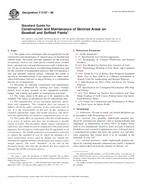
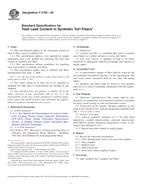 ASTM F2765-09
ASTM F2765-09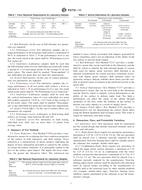 ASTM F2772-11
ASTM F2772-11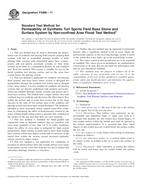 ASTM F2898-11
ASTM F2898-11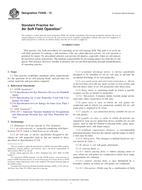 ASTM F2940-13
ASTM F2940-13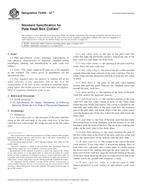 ASTM F2949-12e2
ASTM F2949-12e2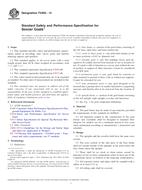 ASTM F2950-14
ASTM F2950-14
 Cookies
Cookies
